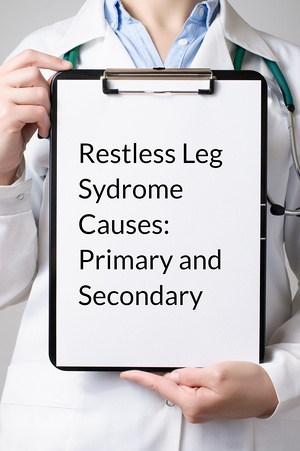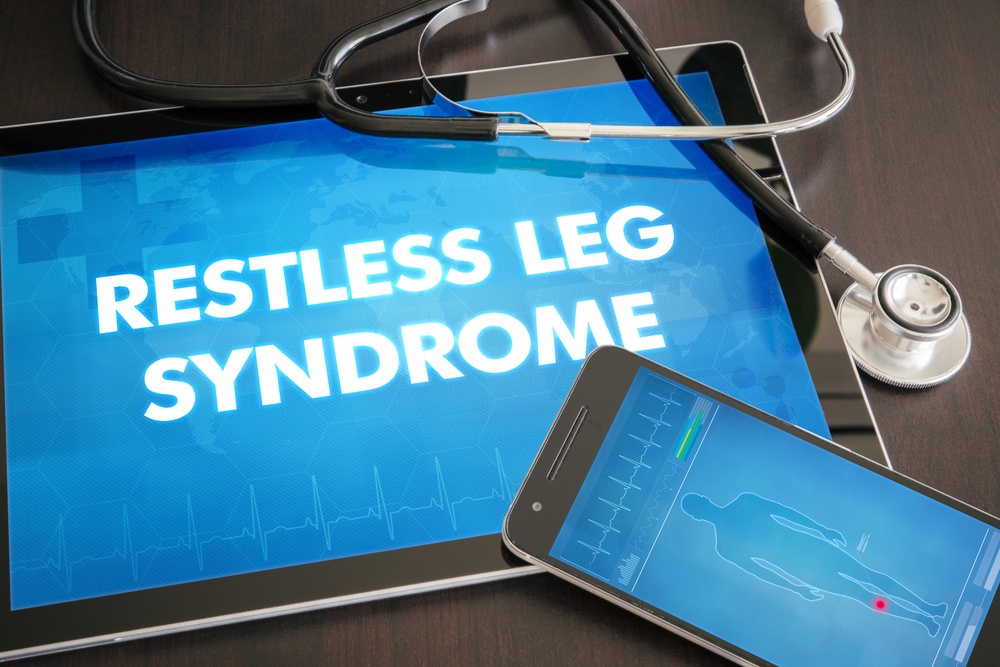Around bedtime, do you ever find yourself fighting the distracting and overpowering urge to move your legs or feet to get relief from itching, burning, or a creepy-crawly feeling? Do you have trouble getting comfortable in bed and find it impossible to get into the right position to drift off to sleep? Perhaps your legs burn and tickle—not on the skin, but deeper inside.
This constant, nagging discomfort and need to fidget and move your legs may be a sign that you have restless leg syndrome (RLS), also known as Willis-Ekbom Disease—a neurological sleep disorder that can interrupt or delay your sleep, robbing you of hours of good-quality shuteye per night. Even if you do sleep a full six to eight hours, the quality of those sleep hours may be compromised due to involuntary leg movements that partially wake you from sleep.
Restless Leg Syndrome by itself is not dangerous, but the resulting accumulated sleep deprivation can have a negative effect on your overall health.
According to the National Sleep Foundation, about 10% of American adults have RLS, and 2% of children. However, the actual numbers are likely higher. Researchers in the field of sleep believe that restless leg is widely misdiagnosed. For example, mood instability resulting from lack of sleep may lead to a diagnosis of depression, when in fact the depression may be the result of sleep deprivation. Still other patients may be misdiagnosed with insomnia, due to their chronic sleeplessness at night and excessive daytime sleepiness.
Symptoms of Restless Leg Syndrome
How do you know if you have restless leg? Risk factors for this common and vexing condition include:
- Age—You’re more likely to have restless leg if you are over 45 (While possible in younger people, RLS is far more common in people over 45).
- Sex—Women are twice as likely as men to have this condition.
- Heredity—Having a parent or family member with RLS increases your likelihood of developing it by age 45. You may be up to six times as likely to develop RLS if someone in your family has it.
- Presence of periodic limb movement disorder. An estimated 80% of people with RLS also have this disorder, in which their limbs—often, their legs—twitch involuntarily during sleep. You may not be aware that you have this, but your bed partner probably is.
Symptoms of RLS include:
- Leg discomfort: burning, itching, or “creepy-crawly” sensations that occur mainly at night, or get more intense and distracting at night. They may also occur when you’re seated for long periods of time (for example, at work, driving a long distance in a car, or while watching a movie or sitting on your couch).
- An overwhelming feeling that you need to move your legs and feet to get relief from the above discomfort.
- Inability to get comfortable in bed; restlessness and tossing and turning.
- Total or partial relief when you get up from sitting or lying down to walk around—but the uncomfortable feelings in your legs return when you go back to bed or to a chair.
- Chronic, excessive daytime sleepiness, caused by the loss of sleep during your restless nights.
- Involuntary leg twitching or spasms during the daytime.
Telling side effects of RLS can also help you doctor make a diagnosis. These can include anxiety and depression symptoms, irritability, concentration and memory problems, and problems with personal relationships. Bed partners may complain of sleeping next to a person with RLS due to their movements creating disturbances.
People with RLS sometimes have trouble professionally, as their irritability and exhaustion may impact the quality of their work and their relationships.
Causes of Restless Leg Syndrome
There are two main types of restless leg syndrome: primary and secondary. Primary, the more common kind, is not caused by any other health condition, medication, or environmental factor. Secondary RLS may have an underlying cause that can be identified and treated or managed to reduce symptoms.
Both are sleep disorders, and can be diagnosed by a board-certified sleep specialist.
Primary Restless Leg Syndrome
The specific causes of the most common form of restless leg syndrome are not yet known.
Scientists do know the disorder is neurological, meaning it has its origins in the brain and nervous system. It’s also largely hereditary, meaning if you have family members with this disorder, you’re more likely to get it as well.
However, researchers recently have found compelling evidence suggesting that a specific protein deficit in the brain may affect how the nervous system regulates iron levels in the body. Medications designed to help regulate iron uptake may be helpful in treating RLS in the future.
Secondary Restless Leg Syndrome

Sometimes, underlying medical conditions or medication use may be causing symptoms. Some of these possibilities include:
- Anemia (low iron)
- Kidney failure
- Medications side effects
- Peripheral neuropathy (a nerve-related issue that may affect muscle function)
- Pregnancy
- Stress
- Varicose veins
Your sleep medicine physician will be able to screen for these or other issues that may be affecting the feelings you’re having in your legs. If no such cause can be found, however, it’s likely you have the more common form of restless leg syndrome.
Restless Leg Syndrome Treatment Options
Restless legs syndrome cannot be cured at this time, but you can learn to manage the symptoms through a combination of lifestyle modifications and medication. Seeing a sleep medicine specialist is the best way to get the condition under control.
Your sleep specialist will most likely ask you to keep a sleep diary that tracks your RLS symptoms—when they occur, with what frequency, and how many times the movements awaken you in the night.
Most often, physicians suggest trying non-medication approaches to managing your symptoms. If these approaches don’t work to improve symptoms, medication may be prescribed.
Treatment for RLS may combine some or all of the following:
- Evaluating whether any existing medications may be causing your symptoms.
- Taking iron supplements (and other vitamin and mineral supplements, if needed), if you are found through blood work to have an iron deficiency.
- Using hypnotic sleeping pills. These may help you to fall asleep at night when your symptoms are preventing you from relaxing.
- Taking medications: Drugs prescribed for Parkinson’s disease and epilepsy and anti-seizure drugs have been found to help alleviate unwanted limb movement in some people with RLS. In rare cases, narcotic or opioid medications may help severe cases, but these carry a high risk of addiction.
- Reducing caffeine and alcohol intake.
- Increasing exercise.
- Stress relief activities. As you unwind before bed, or when you’re seated for long periods of time, talking to others or engaging in a relaxing activity that distracts your mind can be helpful.
- Alternative therapies and bodywork (acupuncture, hypnosis for relaxation, meditation, massage).
Please contact Sweet Sleep Studio in the Kansas City area today if you believe you need help with restless leg syndrome. Call us at (913) 221-6059 or click the link below to request an appointment.




